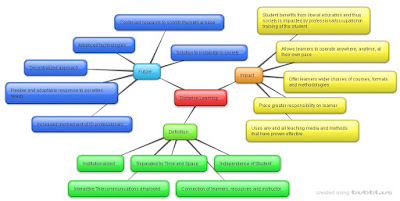Effective
communication is dependent on a number of variables and considerations. Of key
importance, according to Dr. Stolovich (Laureate Education, n.d.), are avoiding
ambiguity, considering tone, timing, personality of the recipient, and
documentation. After reviewing the “Art of Effective Communication” (Laureate
Education, n.d) I have made some interpretations about the various modalities
of communicating; written, verbal, and face-to-face.
Written
– This form of communication has its pros and cons. First, I will discuss the
drawbacks. Written communication allows for misinterpretation of the senders tone
and friendliness. Even if written with these considerations, the reader cannot
always accurately interpret the tone of the email, text, or letter. Another
drawback of written communication is the possibility of typographic errors and
unprofessional language. Use of written communication also doesn’t allow for
immediate clarification and feedback to and from the sender. A positive use of
written communication is that it is documented and clearly defined for future
purposes. In considering using written communication as a mode of interaction,
it would benefit those involved in the project to be mindful of tone, language,
professionalism, composition, and formatting. In addition, using written
correspondence is often better in more formal situations and to relay
information to large groups of individuals.
Verbal –
Similar to written communication, verbal communication is great when used
appropriately. An initial drawback to verbal interaction is that there is no
formal documentation of the exchange. Portny, et al (2015), cite documentation
as being critical to the success of any project as it creates an official
record of all correspondence. In verbal communication, such as the voicemail in
the “Art of Effective Communication” multimedia piece, there is again a
tendency for the listener to misinterpret the meaning of the message because of
the lack of cues from body language. While verbal communication is better than
written communication, in some instances, the speaker needs to be sure that
they consider their tone, friendliness, volume, and professionalism.
Face-to-face
– Is, to me, the most dynamic and effective means of communication. In a
face-to-face setting the receiver is able to interpret the communication by
means of visual and verbal cues from the speaker. In addition, the face-to-face
setting allows the participants to elicit clarification of things they didn’t clearly
understand and receive immediate feedback to mitigate any confusion. The
speaker is able to clearly convey their spirit and attitude, which may or may
not be a good thing for the listener; however it does ensure little
misinterpretation. The drawback to face-to-face communication is that, again,
there is no written documentation of the exchange unless transcribed at a later
time. Something to consider with this type of communication is the personality
of the recipient and the speakers’ body language.
Ultimately,
communication in any form is meant to support and enhance the project
management process. This exercise showed me the pros and cons of each type of
communication and provided me with direction about how to utilize and implement
each modality effectively. For future purposes, I will consider the manner in which
I communicate with project team members and utilize a strategic mixed method
approach to communicating effectively and timely. There is no formula for how
to communicate correctly since each project is dynamic and presents its own set
of variables however a project manager can use best practices and proven
theories to guide their professional practice.
References
Portny, S. E.,
Mantel, S. J., Meredith, J. R., Shafer, S. M., Sutton, M. M., & Kramer, B.
E. (2008). Project management: Planning,
scheduling, and controlling projects. Hoboken, NJ: John Wiley & Sons,
Inc.
Laureate
Education (Producer). (n.d.). Communicating with stakeholders [Video file].
Retrieved from https://class.waldenu.edu
Laureate Education (Producer). (n.d.). Practitioner voices:
Strategies for working with stakeholders [Video file]. Retrieved from https://class.waldenu.edu


